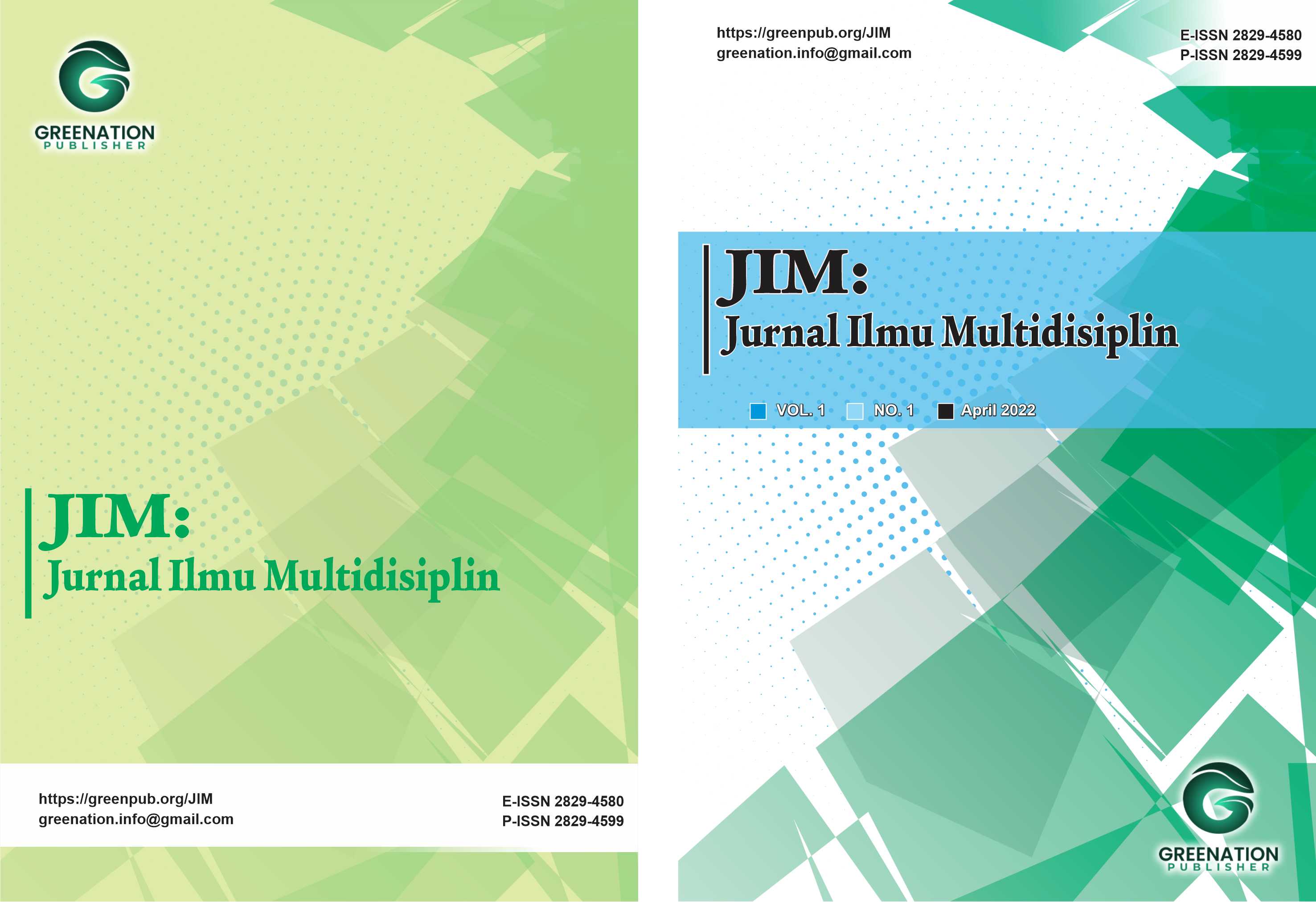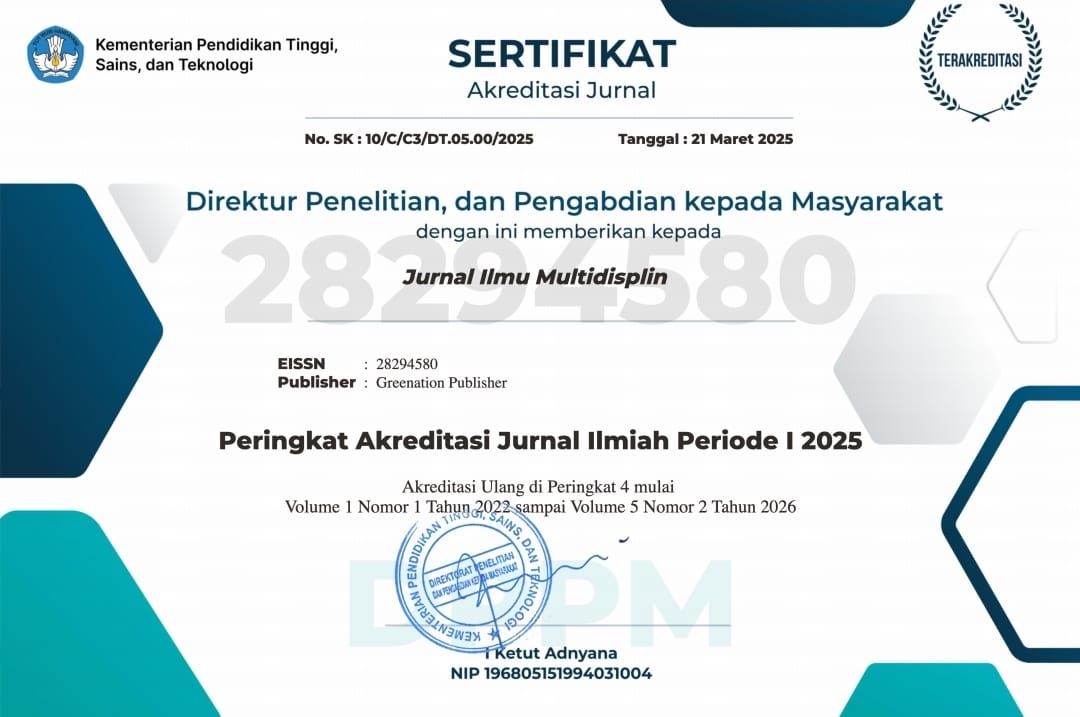The Effect of Perceived Usefulness, Perceived Ease of Use, Perceived Trust, and Perceived Risk on MSMEs' Interest in Using the Quick Response Code Indonesian Standard (QRIS) as Payment Method
DOI:
https://doi.org/10.38035/jim.v4i3.1276Keywords:
Perceived Usefulness, Perceived Ease of Use, Perceived Trust, Perceived Risk, Theory of Planned Behavior (TPB), Technology Acceptance Model (TAM)Abstract
This study aims to investigate and analyze the impact of perceived usefulness, perceived ease, perceived trust, and perceived risk on the interest of SMEs in Tangerang in using the QRIS payment method. The subjects of the study are SME owners in the area. The analysis method employed is causal study with a quantitative approach, based on the Technology Acceptance Model (TAM) and the Theory of Planned Behavior (TPB). Primary data were collected through questionnaires and analyzed using Partial Least Squares (PLS) software with a Structural Equation Modeling (SEM) approach. The results indicate that perceived usefulness, perceived ease, perceived trust, and perceived risk significantly influence SMEs' interest in using QRIS.
References
Ahdiat, A. (2023). Ini Pertumbuhan Jumlah Pengguna QRIS sampai Akhir 2022. Katadata Media Network.
Akhyar, R. A., & Sisilia, K. (2023). Pengaruh Persepsi Manfaat Dan Persepsi Kemudahan Terhadap Keputusan Penggunaan Pembayaran Digital Quick Response Code Indonesian Standard (QRIS) . Management Studies and Entrepreneurship Journal (MSEJ), 4(4), 3944–3954.
Anisa, W. N., Rimadhani, N. A., Ifaa, K., & Astuti, Y. (2023). Pengaruh Persepsi Kemudahan, Manfaat Dan Kepercayaan terhadap Minat Penggunaan Shopeepay Sebagai Sarana Transaksi Pembayaran. Jurnal Ekonomi Sakti (JES), 12(1), 89–99.
Asih, D., & Nurhayati, M. (2023). Pengaruh Kepercayaan, Kualitas Teknikal dan Kualitas Fungsional Dalam Membentuk Komitmen Keterhubungan Pelanggan Pada Layanan Perbankan Syariah. Prosiding The National Conference on Management and Business (NCMAB) , 323–331.
Badan Pusat Statistik. (2020). Banyaknya Usaha/Perusahaan Industri Pengolahan Mikro Dan Kecil. Bps.Go.Id.
Bank Indonesia. (2019). Kenal dan Layanan. Bi.Go.Id. Https://Www.Bi.Go.Id/QRIS/Default.Aspx
Caroline, R. T. M., & Murtiningsih, D. (2024). Digitalisasi UMKM. Jurnal Kreativitas Pengabdian Kepada Masyarakat (PKM) , 7(3), 1387–1400.
Davis Fred D. (1989). Perceived Usefulness, Perceived Ease of Use, and User Acceptance of Information Technology. MIS Quarterly, 13(3), 319–340. http://www.jstor.org/stable/249008 .
Ghozali, I. (2014). Structural Equation Modeling Metode Alternatif Dengan Partial Least Square (PLS) (IV). Badan Penerbit Universitas .
Indah, M., & Agustin, H. (2019). Penerapan Model Utaut (Unified Theory Of Acceptance And Use Of Technology) Untuk Memahami Niat Dan Perilaku Aktual Pengguna Go-Pay Di Kota Padang. Jurnal Eksplorasi Akuntansi (JEA), 1.
Kusumaningtyas, F. I., & Budiantara, M. (2023). Pengaruh Penggunaan Qris Sebagai Metode Pembayaran Terhadap Pengembangan UMKM Di Kabupaten Sleman Sejak Pandemi Covid-19. Journal of Economics and Business UBS, 12(3), 1603–1616.
Lahugu, R., Sulistyandari, & Binangkit, I. D. (2023). Pengaruh Persepsi Manfaat, Persepsi Kemudahan Penggunaan, dan Tingkat kepercayaan Terhadap Minat Penggunaan Uang Elektronik Di Pekan Baru. Jurnal Ilmiah Mahasiswa Merdeka EMBA, 2(1), 532–546.
Legi, D., & Saerang, R. T. (2020). The Analysis Of Technology Acceptance Model (Tam) On Intention To Use Of E-Money In Manado (Study On: Gopay, Ovo, Dana). Jurnal EMBA?: Jurnal Riset Ekonomi, Manajemen, Bisnis Dan Akuntansi, 8(4), 624–632.
Madjid, Z. (2024, January). BI Catat Transaksi QRIS Tumbuh 130,01% di 2023, Transaksi Kartu Turun . Kata Data. https://katadata.co.id/finansial/makro/65a7b7704b96a/bi-catat-transaksi-qris-tumbuh-130-01-di-2023-transaksi-kartu-turun
Marey, D. R. E., & Purwanto, E. (2019). Model Konseptual Minat Penggunaan E-Wallet: Technology Acceptance Model (TAM). Philadelphia.
Mawardi, T. F. R., & Prabowo, B. (2023). Pengaruh Persepsi Manfaat, Persepsi Kemudahan, dan Kepercayaan terhadap Keputusan Penggunaan Aplikasi E-Wallet DANA (Studi Pada Mahasiswa FISIP UPN “Veteran” Jawa Timur). Management Studies and Entrepreneurship Journal (MSEJ), 4(4), 3733–3741.
Natalia, O., & Tesniwati, R. (2021). The Effect of Trust, Perseption Of Ease Of Use, Perception Of Benefits, Perception Of Risk and Perception Of Service Quality On Interest In Using Mobile Banking Independent In Bekasi City. International Journal of Science, Technology & Management, 2(5), 1722–1730.
Ningsih, H. A., Sasmita, E. M., & Sari, B. (2021). Pengaruh Persepsi Manfaat, Persepsi Kemudahan Penggunaan, Dan Persepsi Risiko Terhadap Keputusan Menggunakan Uang Elektronik (QRIS) Pada Mahasiswa. IKRA-ITH EKONOMIKA, 4(1), 1–9.
Nurhapsari, R., & Sholihah, E. (2022). Analysis of the factors of intention to use QRIS for MSMEs in Semarang City’s traditional market. Jurnal Ekonomi Modernisasi, 18(4), 199–211.
Perwitasari, A. W. (2021). The Effect of Perceived Usefulness and Perceived Easiness towards Behavioral Intention to Use Fintech by Indonesian MSMEs. The Winners, 23(1), 1–9.
Purnomo, A. S. D., & Ramadhani, D. D. (2022). Pengaruh Manfaat, Kemudahan terhadap Minat Pemakaian Financial Technology Pada Penggunaan Pembayaran Digital UMKM di Sumenep. AKUNTABILITAS: Jurnal Ilmiah Ilmu-Ilmu Ekonomi, 14(2), 17–30.
Puspitaningrum, R. A. P., & Fatah, D. A. (2022). Pengaruh Persepsi Manfaat, Pemahaman, Dan Religiusitas Terhadap Keputusan Pelaku UMKM Memilih QRIS Bsi Sebagai Media Pembayaran Pada Tempat Usahanya. Seminar Nasional Akuntansi Dan Manajemen PNJ , 3.
Putri, D. E., Sinaga, O. S., Sudirman, A., Augustinah, F., & Dharma, E. (2022). Analysis of the Effect of Perceived Ease of Use, Perceived Usefulness, Trust, and Cashback Promotion on Intention to Use E-wallet. International Journal of Economics, Business and Management Research, 6(11), 63–75.
Rafferty, N. E., & Fajar, A. N. (2022). Integrated QR Payment System (QRIS): Cashless Payment Solution in Developing Country from Merchant Perspective. Asia Pacific Journal of Information Systems, 32(2), 630–655.
Rosdiana, R., & Mahliza, F. (2022). Pemanfaatan Aplikasi Bukuwarung Dalam Pencatatan dan Pengelolaan Keuangan UMKM di Wilayah Kembangan Selatan. PEMANAS: Jurnal Pengabdian Masyarakat Nasional, 2(1), 36–43.
Sebayang, N. I. T. B., & Rahmayati. (2023). Pengaruh Persepsi Kepercayaan Dan Persepsi Keamanan Terhadap Minat Penggunaan QRIS Sebagai Alat Pembayaran Digital UMKM Halal Kota Medan. Jurnal Tabarru?: Islamic Banking and Finance, 491–502.
Segoro, W., & Ferdiansyah. (2023). Pengaruh Kepercayaan, Persepsi Kemudahan, Dan Word Of Mouth Terhadap Minat Untuk Menggunakan M-Wallet (Studi Kasus M-Wallet Telekomunikasi). Jurnal Ekonomika Dan Manajemen , 12(1), 1–17.
Silaen, M. F., Manurung, S., & Nainggolan, C. D. (2021). Effect Analysis Of Benefit Perception, Ease Perception, Security And Risk Perception Of Merchant Interest In Using Quick Response Indonesia Standard (Qris). International Journal of Science, Technology & Management, 2(5), 1574–1581.
Sudiatmika, N. B. P., & Martini, I. A. O. (2022). Faktor-Faktor Mempengaruhi Niat Pelaku UMKM Kota Denpasar Menggunakan QRIS. JMM UNRAM, 11(3), 239–254.
Sugiharto, F., & Mulyono, R. (2023). Analysis of Learning Effectiveness During the Covid-19 Pandemic at Korwilcam Bidik Elementary School, Adimulyo District, Kebumen Regency. Sosial and Educational Studies, 2(https://edunity.publikasikupublisher.com/index.php/Edunity/issue/view/10), 368–376.
Sugiyono. (2013). Metode Penelitian Kuantitatif Kualitatif Dan R&D. Alfabeta.
Tamba, D. (2017). Aplikasi Theory Of Planned Behavior untuk Memprediksi Perilaku Mahasiswa Membeli Laptop Lenovo (Studi Kasus: Mahasiswa Fe- Unika Santo Thomas Su) . Jurnal Manajemen Dan Bisnis , 17(2), 115–141.
Utami, M. G., Dermawan, M., & Yusuf, A. (2023). Analisis Minat Penggunaan Dompet Digital LinkAja Menggunakan Theory of Reasoned Action. Jurnal Maksipreneur: Manajemen, Koperasi, Dan Entrepreneurship, 13(1), 73–91.
Wardani, G. O. P., & Sari, R. C. (2021). Pengaruh Kemudahan Penggunaan, Kebermanfaatan, dan Persepsi Risiko Terhadap Minat Penggunaan Financial Technology Sistem Pembayaran. Profita?: Kajian Ilmu Akuntansi, 9(7), 1–17.
Wicaksono, S. R. (2022). Teori Dasar Technology Acceptance Model. Seribu Bintang.
Yogananda, A. S., & Dirgantara, I. M. B. (2017). Pengaruh Persepsi Manfaat, Persepsi Kemudahan Penggunaan, Kepercayaan Dan Persepsi Risiko Terhadap Minat Untuk Menggunakan Instrumen Uang Elektronik. Diponogoro Journal Of Management, 6(4), 1–7.
Zusrony, E., Anzie, L. P., Asti, P., Manulu, G., Permana, I., & Imaliya, T. (2023). Analisis Perceived Usefulness, Perceived Ease of Use dan Perceived Risk Terhadap Minat Penggunaan Pembayaran Digital Quick Response Indonesia Standard (QRIS) Pada Pelaku UMKM. E-Bisnis?: Jurnal Ilmiah Ekonomi Dan Bisnis, 16(1), 200–206.
Downloads
Published
How to Cite
Issue
Section
License
Copyright (c) 2025 Rona Tumiur Mauli Carolin Simorangkir

This work is licensed under a Creative Commons Attribution 4.0 International License.
You are free to:
- Share— copy and redistribute the material in any medium or format
- Adapt— remix, transform, and build upon the material for any purpose, even commercially.
The licensor cannot revoke these freedoms as long as you follow the license terms.
Under the following terms:
- Attribution— You must give appropriate credit, provide a link to the license, and indicate if changes were made. You may do so in any reasonable manner, but not in any way that suggests the licensor endorses you or your use.
- No additional restrictions— You may not apply legal terms or technological measures that legally restrict others from doing anything the license permits.
Notices:
- You do not have to comply with the license for elements of the material in the public domain or where your use is permitted by an applicable exception or limitation.
- No warranties are given. The license may not give you all of the permissions necessary for your intended use. For example, other rights such as publicity, privacy, or moral rightsmay limit how you use the material.




























